© 2025 ALLCITY Network Inc.
All rights reserved.

By the mid-1950s, the Colorado Buffaloes football program had grown from a regional power to a contender in one of the nation’s premier conferences. Folsom Field was no longer large enough to contain the crowds that wanted to see the Buffs; especially when Nebraska and Oklahoma came to town. With both of those teams on the docket for 1956, plans were made to permanently expand the stadium for the first time. Because the original seating bowl was entirely below street level, the new stands would be like making an entirely new stadium from the ground up – but one that had to blend in seamlessly with what was already there.
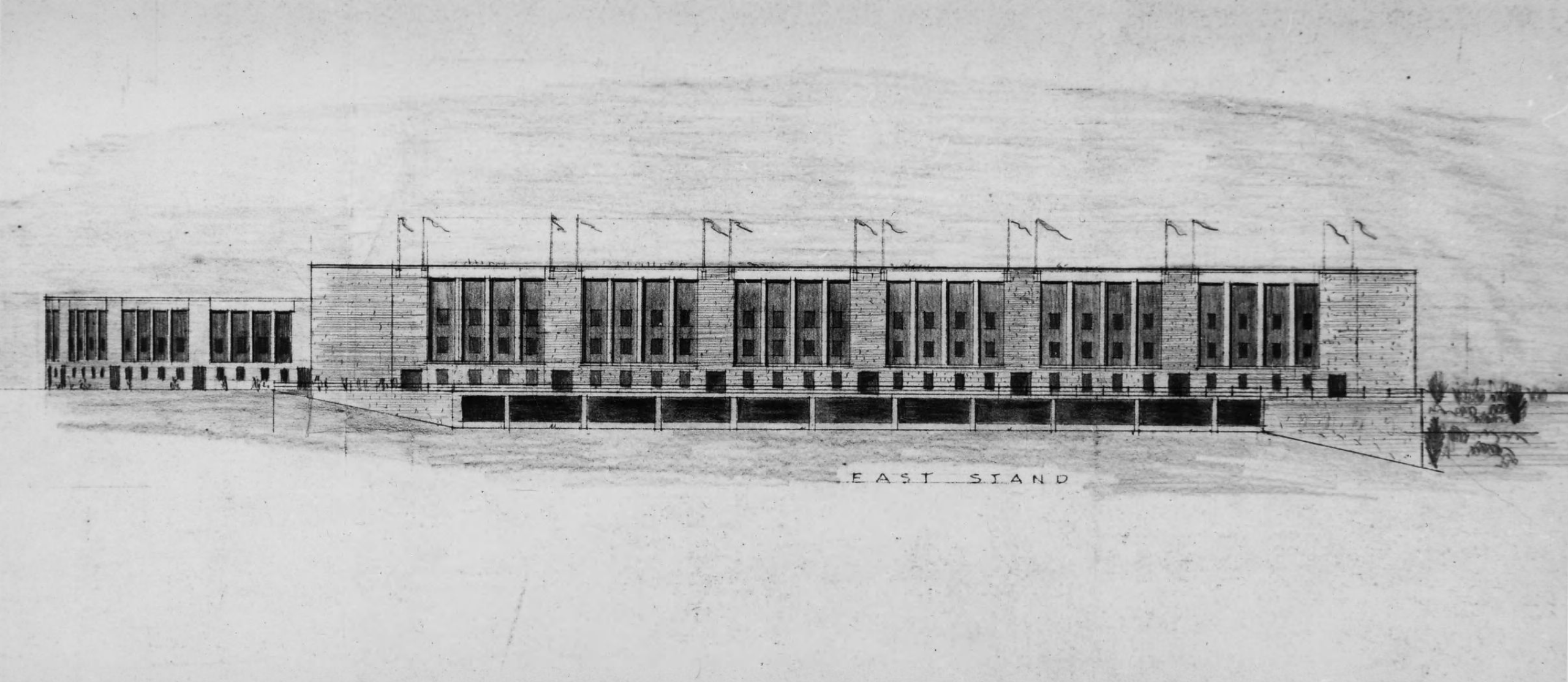
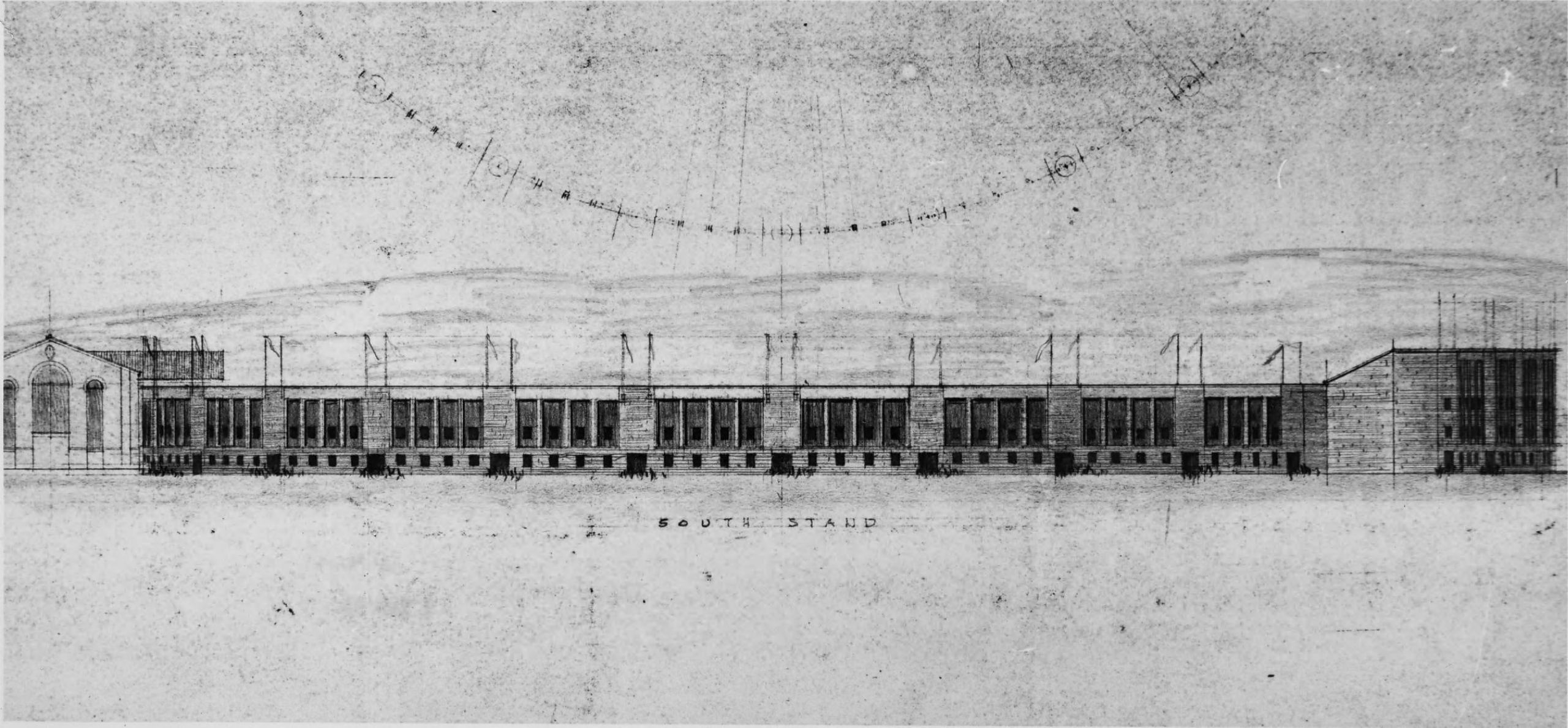
I’ve already said that the myriad expansions and renovations are part of what I love about college stadiums, but many of them wind up looking like a collection of different parts rather than a cohesive whole. The 1956 Folsom Field expansion did a masterful job of avoiding this problem. The new stands rose at the same angle as the old ones, and the curve of the end zone sections matched perfectly. Most of the new seats were along the sideline, thereby avoiding the pitfalls of some stadiums (Memorial Stadium in Lincoln in particular) of having a majority of the fans at suboptimal viewing angles. The stands themselves used aluminum for both the benches and the walking paths, and that metal is still there today (though some of it needs to be replaced).
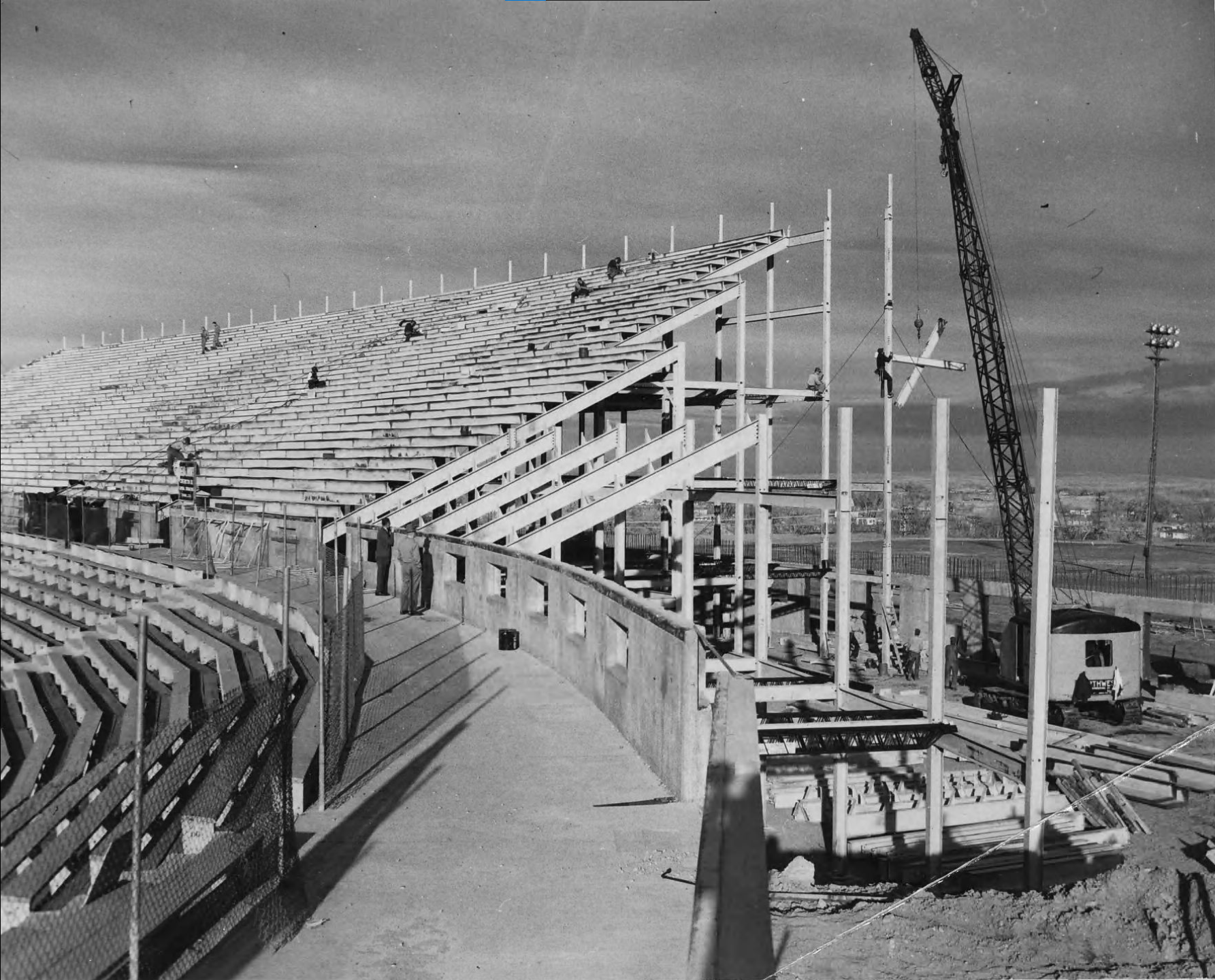
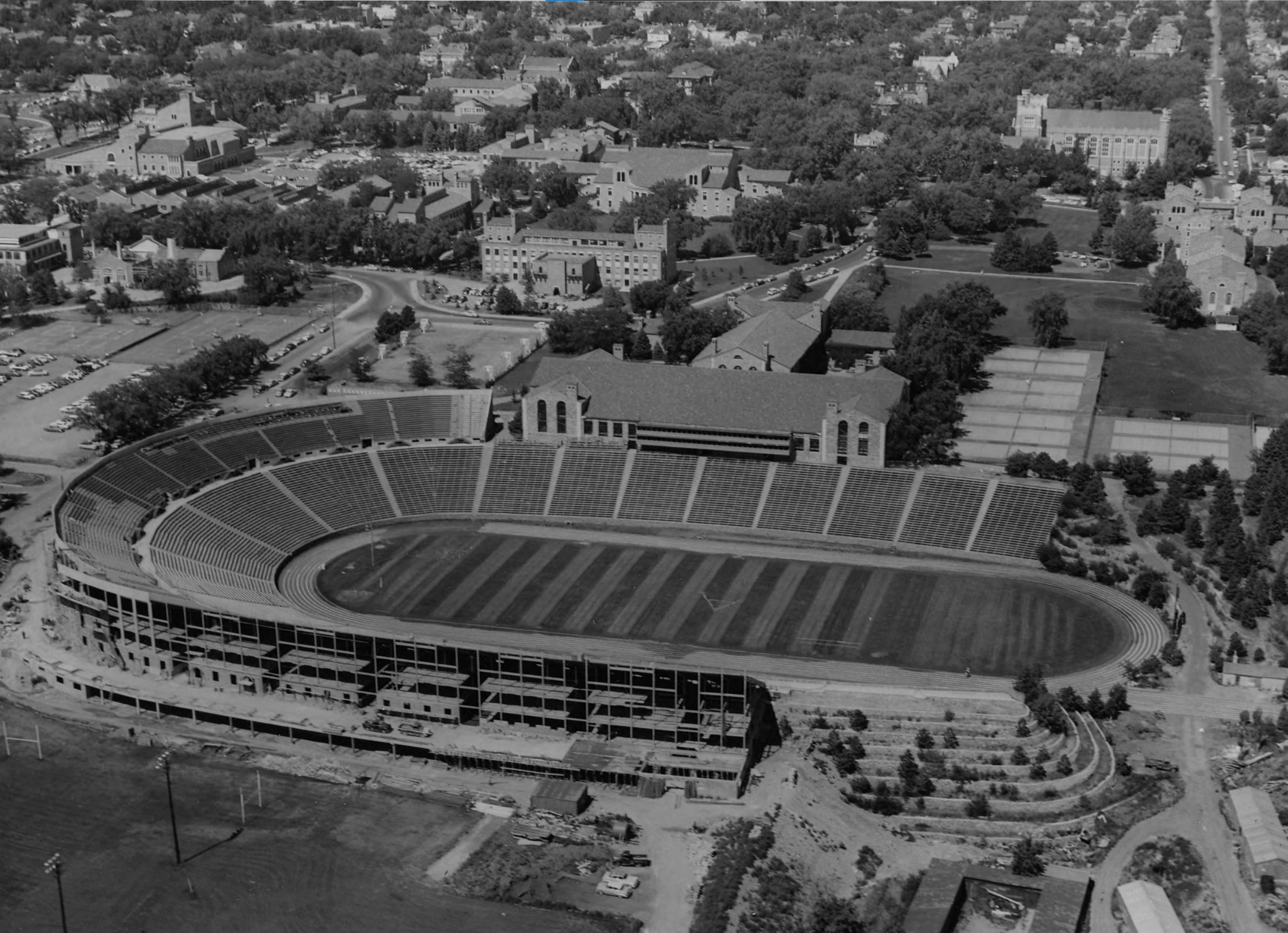
Sandstone, the campus’ signature building material, was interspersed with brick on the stadium’s exterior. The new facade matched its surroundings perfectly, and it even matched the wall around the field itself, which had been changed from wood to sandstone around 1940. In the author’s opinion, Folsom Field was at its most picturesque from 1956-1966.
While only the south end zone facade is visible from the street, the entire 1956 addition still stands today. This includes the bathrooms, with their (in)famous troughs, as well as classrooms, offices, and the ROTC headquarters. There has been a lot written recently about finding uses for new football stadiums on the nearly 360 days a year they aren’t hosting games, but Folsom has been used for much more than football for nearly 70 years.
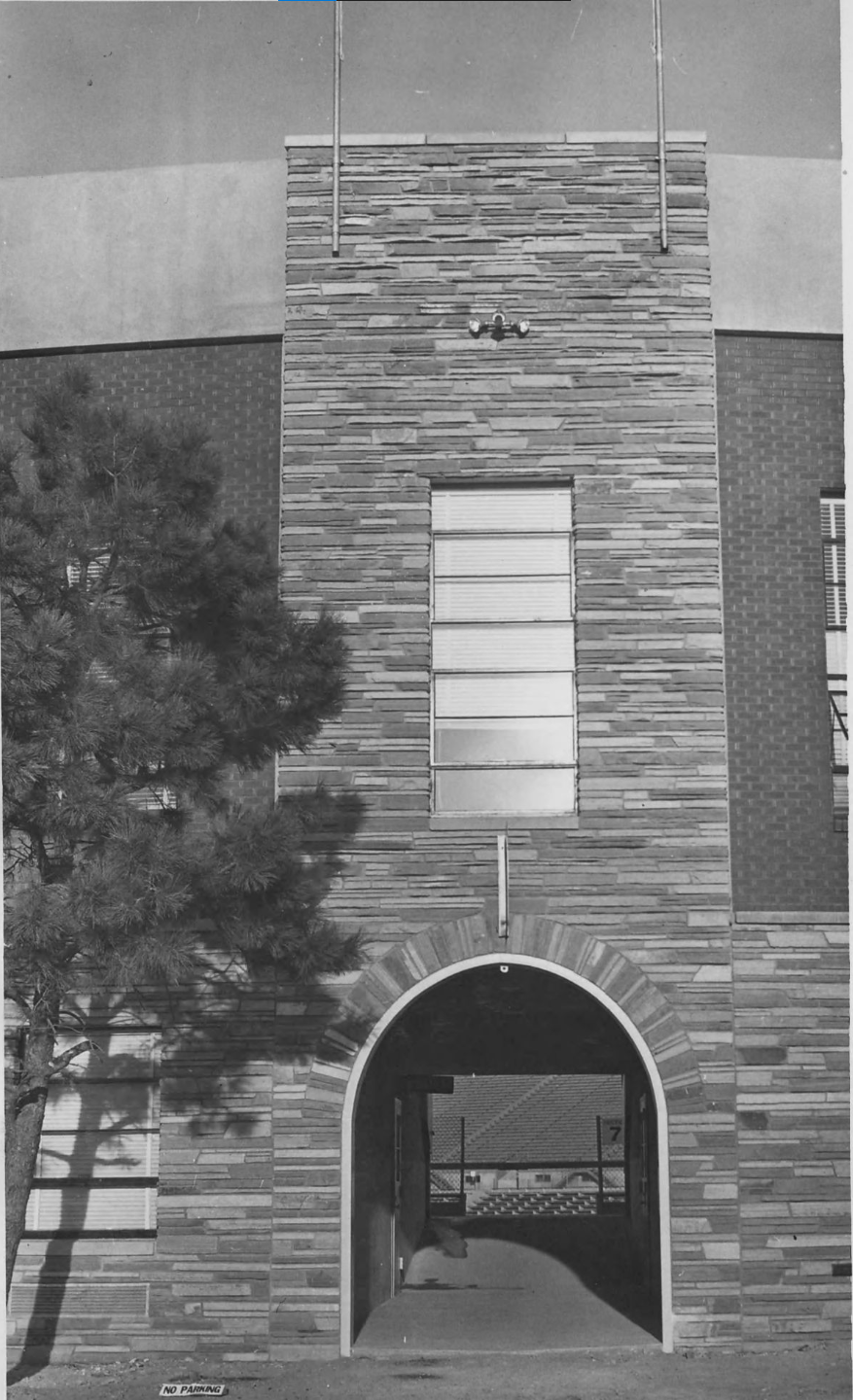
All told, 15,138 seats were added at a cost of $1,421,513, as well as temporary bleacher seating in the north end zone for 2,000 more people. This raised Folsom’s capacity to 43,878 in time for Nebraska and Oklahoma to visit.
The Huskers were up first, and 45,500 fans sold out Folsom on homecoming weekend to watch the Buffs defense pitch a shutout. CU’s 16-0 win moved them to 5-1 on the season and 4-0 in the Big 8; setting up a showdown the following week against Oklahoma.
47,000 fans crammed into the stadium on a dreary, gray day as the Buffs fell to the #1 ranked Sooners 27-19 in characteristically heartbreaking fashion – CU led 19-6 at halftime – dashing hopes for a first Big 8 title. All was not lost, however, as conference rules at the time prohibited the same team from going to the Orange Bowl in consecutive seasons. Dominant Oklahoma had to sit home for the holidays in 1956 because of this rule, and the second-place Buffs made their second ever bowl trip. They defeated Clemson in a 27-21 thriller on January 1, 1957 to take home the program’s first bowl victory, and finished ranked in the AP Poll for the first time in two decades.
Despite reaching a new program-high 9th in the nation after a 5-0 start, head coach Dal Ward was fired after the Buffs lost four of their last five games in 1958. Succeeding him was Sonny Grandelius. His first move was to overhaul CU’s uniforms, which had drawn criticism for years due to a silver and gold color combination that looked more like mustard and gray. Grandelius ditched gold entirely in favor of black jerseys, silver helmets, and silver pants. While the helmets and pants didn’t stick around after his tenure, CU has worn black jerseys at home ever since.
Sonny led the Buffaloes to their first-ever undefeated Big 8 season and the conference title in 1961. After an unsuccessful Orange Bowl trip, he was ousted in the offseason over an alleged slush fund for players. It took four years for CU football to recover.
Around this time, Folsom’s increased capacity and new prominence on the campus skyline led many to begin referring to it as Folsom Stadium instead of the more humble Folsom Field. Both names were used interchangeably for the rest of the century, but the alliterative one has once again become standard over the last two decades.
In addition to football, Folsom hosted several distinguished visitors during this era. Senator John F. Kennedy, mere weeks before announcing his presidential run, was the guest of Byron White for CU’s victory over Air Force on November 28, 1959. It was for this, I assume, that he rewarded White with a Supreme Court appointment in April 1962. Later in the spring of ‘62, Boulder threw a parade for local astronaut Scott Carpenter. It culminated at the stadium with a speech from the fourth American to go to outer space.
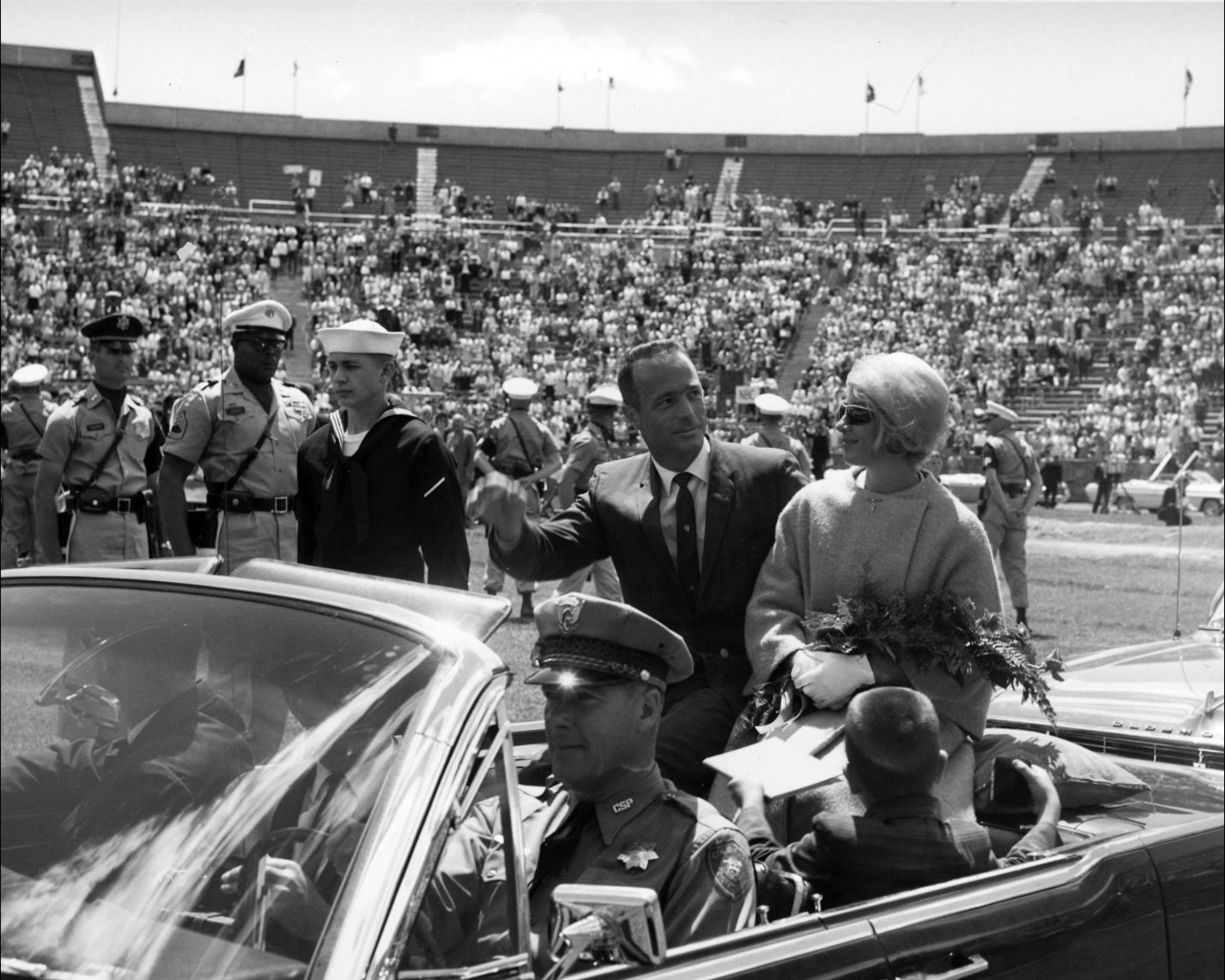
But Folsom’s most distinguished guest in the 1960s would not be a one-time visitor. In fact, she never missed a home game. She was almost as much of an attraction as the football that followed her entrance, and over time she would become synonymous with Folsom Field as well as the football team, and CU as a whole. Her name, of course, was Ralphie.
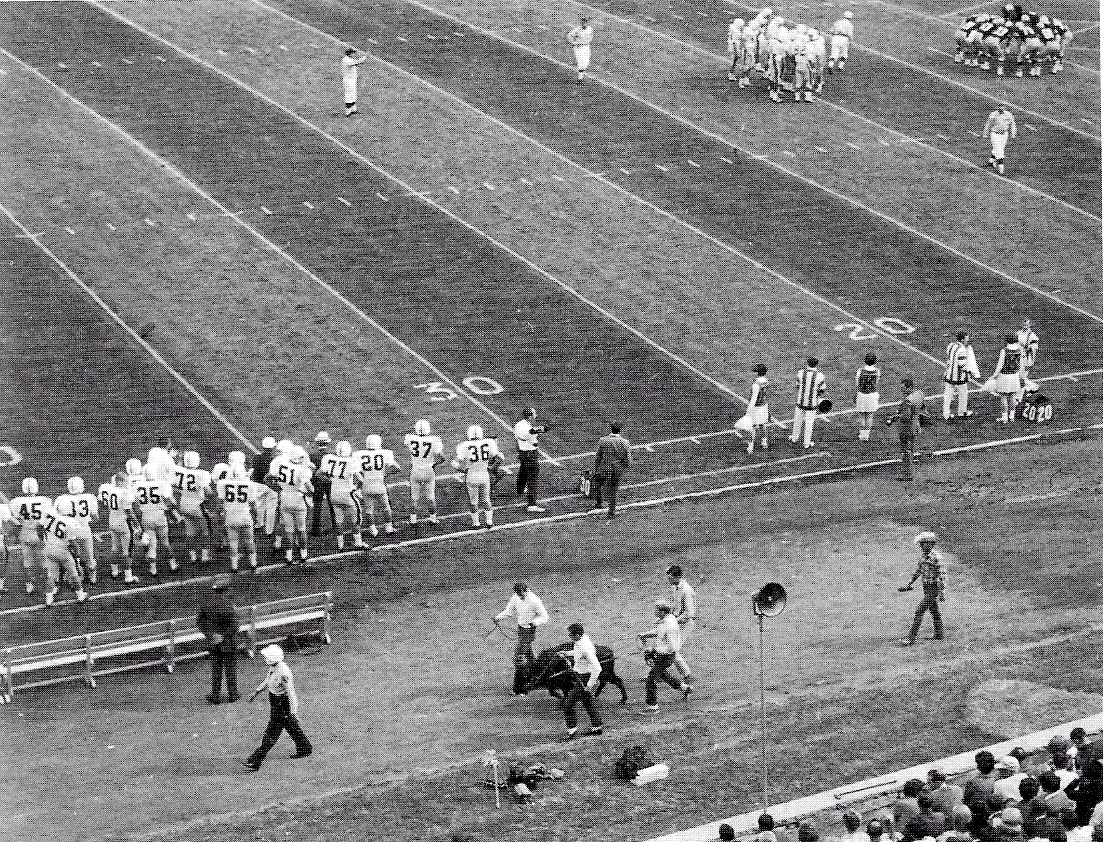
There is only one year in which the above photograph could have been taken. It depicts Ralphie being paraded by her handlers on the running track in her first season at Folsom Field. In 1966, she did not yet lead the team onto the field before games. While I have never had this theory confirmed, I suspect that the greatest tradition in college sports only exists because of what happened to Folsom Field that offseason.
In 1967, Folsom was expanded a second time. Instead of building up higher, CU dug in again. To the tune of a cool million dollars, the field was lowered and the bleachers were extended down; adding 5,850 seats and eliminating the running track. Capacity was now 48,516, but there was no more room for Ralphie on the sidelines. How could she be involved in the gameday experience now? There had been other buffaloes on the Folsom sidelines before – the first one in 1934, and another named Mr. Chips in the 1950s. Ralphie had only been around for one year and could easily have become a temporary guest like the other two. Instead, at the 1967 homecoming game, she ran across Folsom Field for the first time, with the football team following close behind. It has been a tradition ever since, and I don’t think it ever happens unless the stadium expanded the way it did.
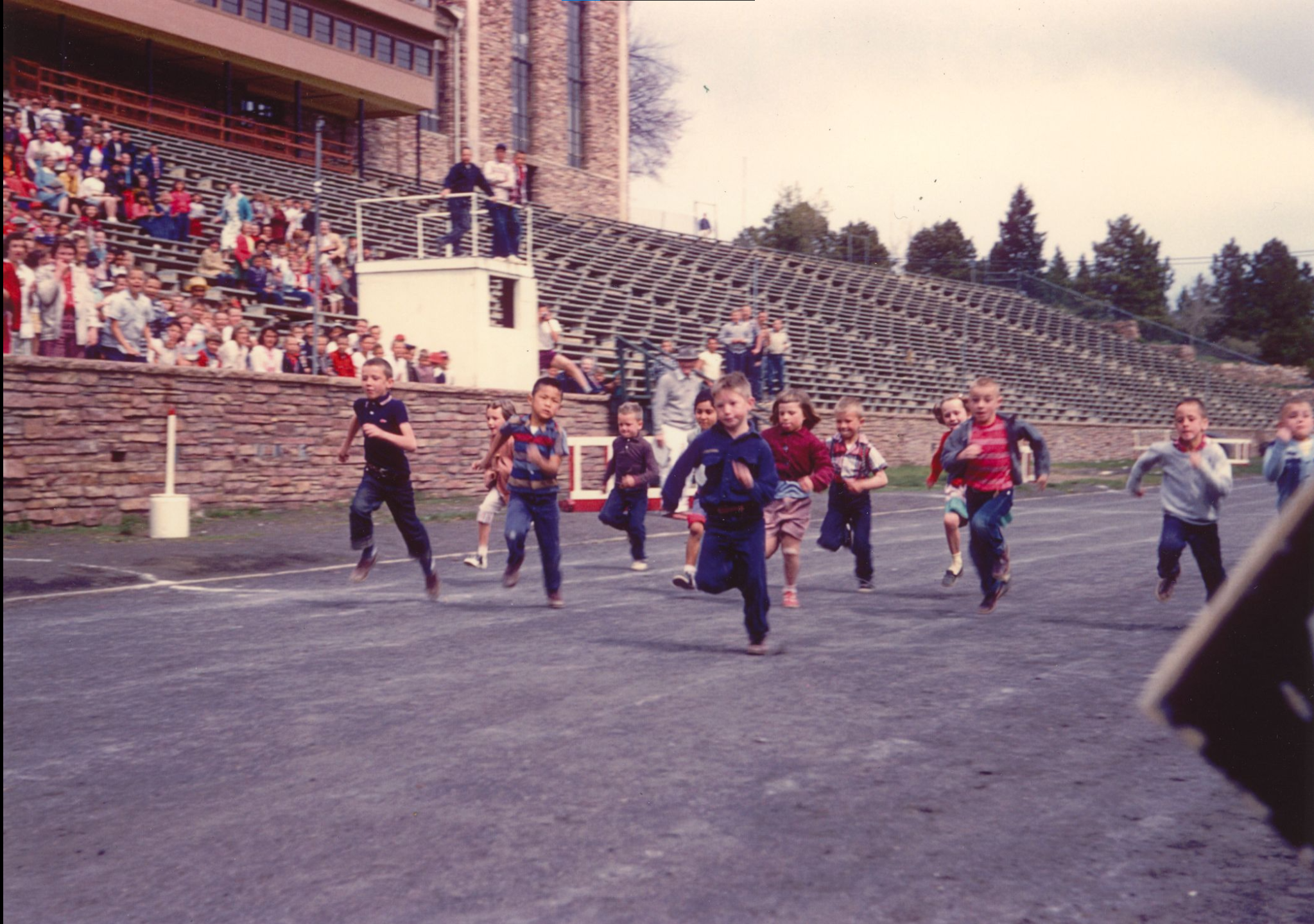
Besides the Ralphie connection, the 1967 expansion was another masterstroke in the stadium’s design. It brought the fans closer to the action, which is the opposite of what happens with most expansions. You can’t get much closer to a college football game than the first few rows of Folsom Field. Kinnick Stadium in Iowa City and Boone Pickens Stadium in Stillwater are the only two other stadiums in the conversation, and there’s some debate over which of the three actually has the closest sidelines in the game. While it means that Folsom will never see a soccer game, the fans’ proximity to the action makes for an environment far louder than other stadiums of similar or even larger size.
The final feature Folsom gained in 1967 was the hill in the north end zone. Rather than extend the seating behind the goal line down to field level, the architects left a grassy hill. You can see the difference in these two shots of graduation, from 1966 and 1967 respectively. When I say there are no bad seats in Folsom, part of the reason is because of the decision not to put field-level seating there. The hill looked wonderful in the summer, but it turned to mud by late in the season and only lasted for a few years.
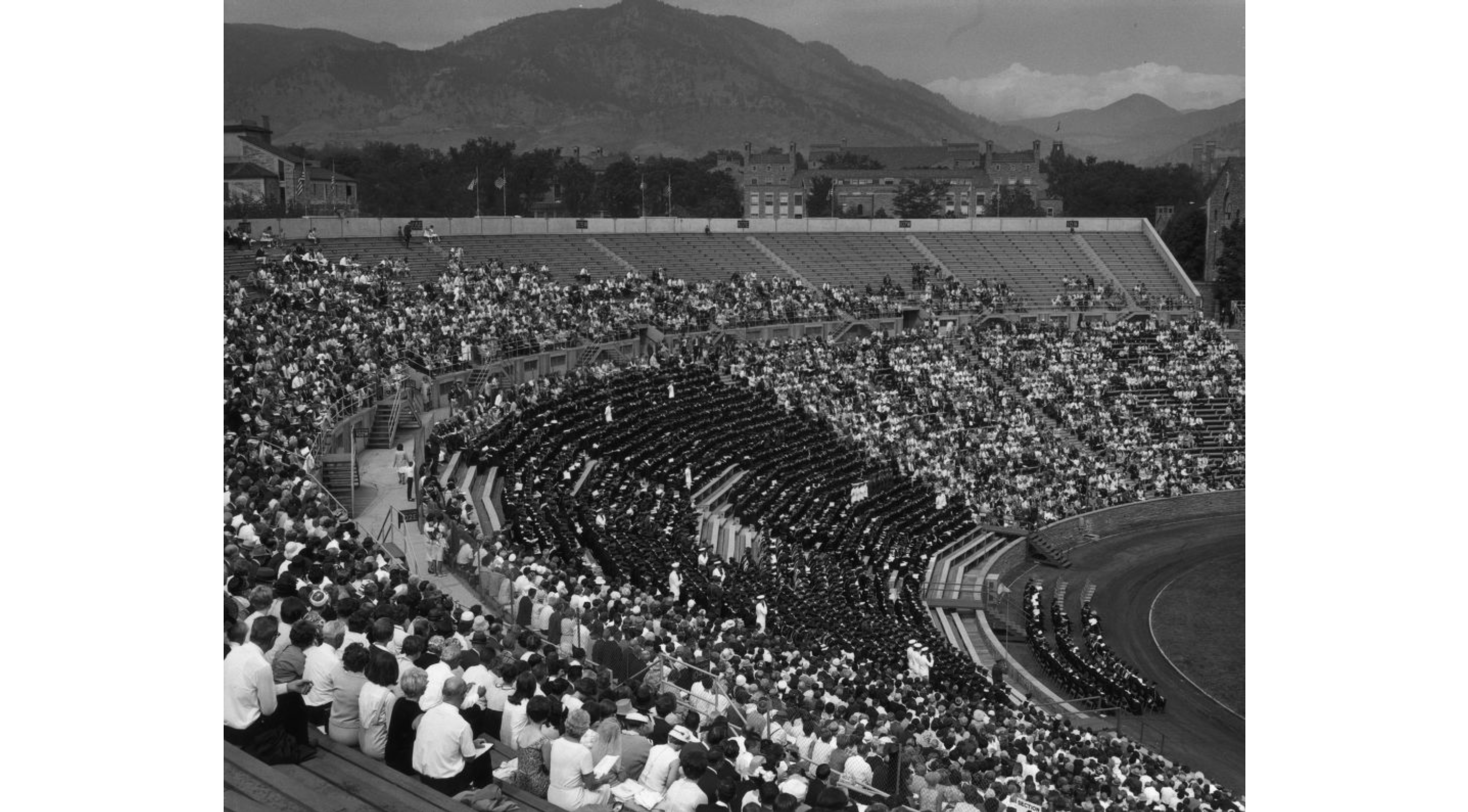
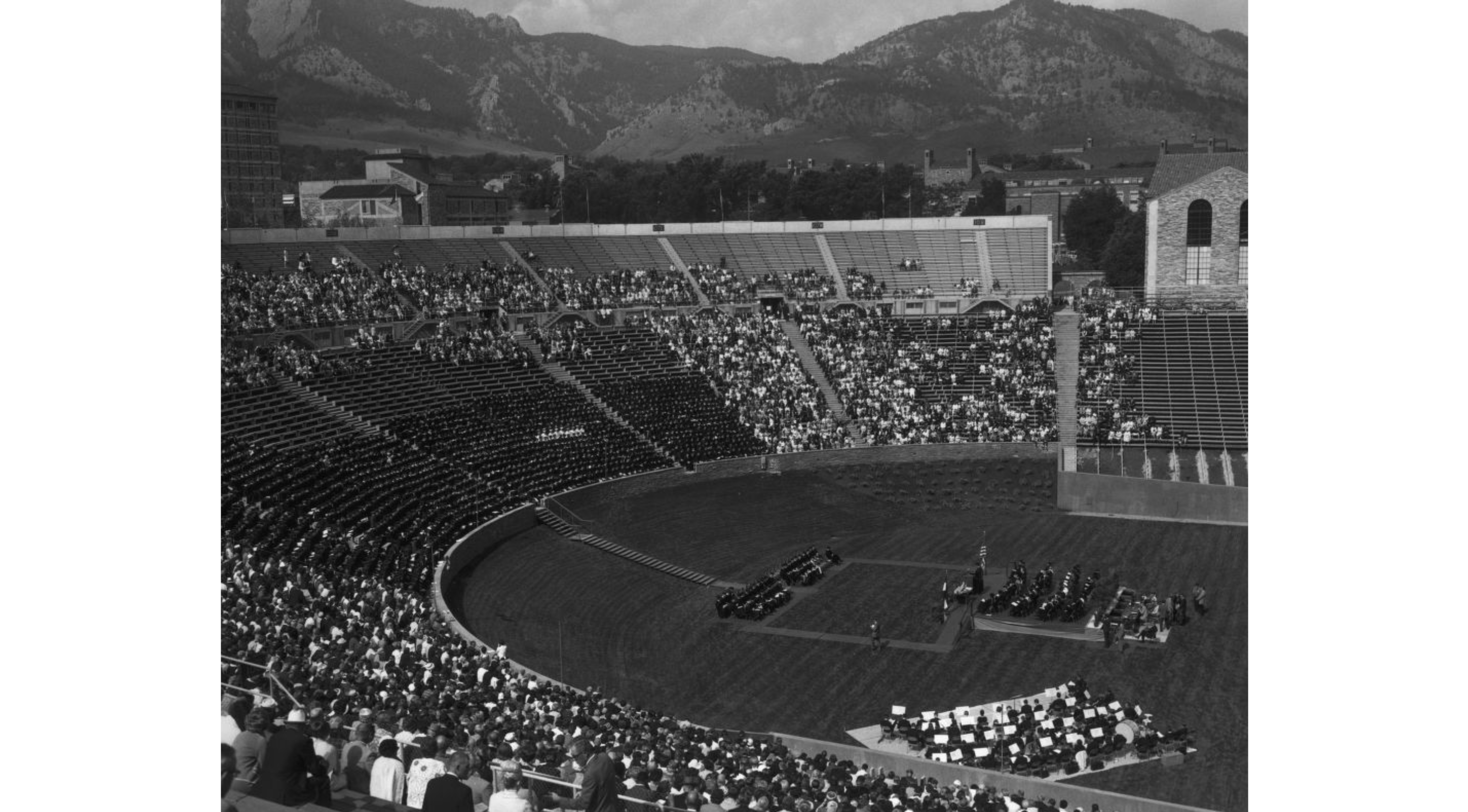
The 1967 Buffs continued a pattern established in 1924 and 1956 of having a great season in a new or expanded stadium. CU reached #3 in the country after a 5-0 start, and finished their 9-2 season with the program’s second bowl victory in the Bluebonnet Bowl in Houston. Head coach Eddie Crowder had finally rebuilt the program to where it was before the Grandelius scandal.
With the increase in TV and radio coverage in the 1960s, Folsom’s press accommodations were once again proving insufficient for the amount of reporters who wanted to come to Boulder. CU responded by affixing a huge structure to the front of the field house. In the author’s opinion, this was the first time Folsom Field sacrificed beauty for practicality. Whenever the field house is replaced, I will mourn its loss, but the 1968 press box can easily be replaced with something better looking.
The five-story behemoth was not only for the media. For the first time, club seating came to Folsom Field. The Flatirons Club added 1,066 shaded, individual seats with chairbacks. Now it was possible to watch CU games in style, if that was your scene. It also had its own food service and made for the perfect place for university brass to entertain important guests. The total cost of these additions was $562,000, and they brought Folsom Field’s capacity to 49,234.

The new press box was filled to capacity on September 26, 1970 when the Buffs hosted 4th-ranked Penn State. The Nittany Lions had not lost in 31 games, and had won their last 23. In front of a national ABC television audience, the 18th-ranked Buffs ended the streak in dominating fashion. The 41-13 victory made national headlines and landed CU’s Phil Irwin on the cover of Sports Illustrated the following week. The Buffs were now officially one of college football’s big-time programs, and the best was still to come.
NEXT TIME:
Folsom gets some major upgrades: a new playing surface, new electronic scoreboard, and a complete renovation of the original bowl.
The 25 Greatest Games nominees from this era:
- October 27, 1956 vs. Nebraska. In front of the first sellout in the newly expanded stadium, the Buffs blank the Huskers 16-0 on homecoming to set up the following week’s showdown with Oklahoma.
- October 25, 1958 vs. Nebraska: The Buffs’ 27-16 win gives them a 5-0 record and the #9 ranking in the country – the first time CU has cracked the top 10.
- October 21, 1959 vs. Missouri: CU quarterback Gale Weidner leads a late comeback from a 20-6 fourth-quarter deficit, including a successful two-point conversion in only its second year of existence, for a stunning 21-20 win
- October 29, 1960 vs. Oklahoma: After years of heartbreak, CU finally beats Oklahoma 7-0 for their fifth consecutive victory of the campaign.
- October 7, 1961 vs. Kansas: trailing 19-0 in the fourth quarter, a furious CU comeback – again led by Weidner – stuns the Jayhawks 20-19 and sets the stage for a magical season.
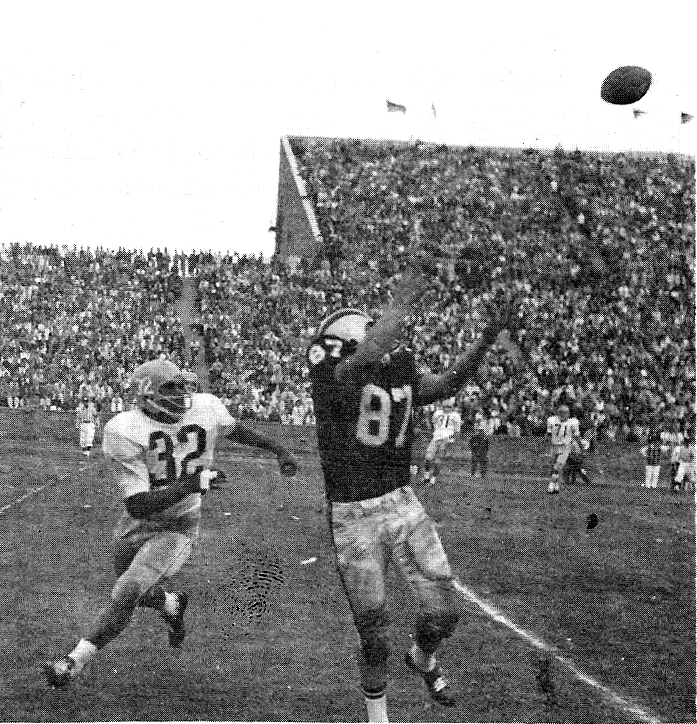
- November 4, 1961 vs. #10 Missouri: in CU’s first-ever top-10 showdown and the first nationally televised game at Folsom Field, the 8th-ranked Buffaloes improve to 6-0 on the season en route to a Big 8 Championship.
- October 14, 1967 vs. #17 Missouri: #6 CU’s 23-9 win gives the Buffs their first-ever top 5 ranking.
- October 25, 1969 vs. #5 Missouri: On homecoming, the 3-2, unranked Buffs stun the Tigers 31-24 for the first top 5 upset in program history. CU goes on to finish the season 8-3.
- September 26, 1970 vs. #4 Penn State: the biggest regular season win in program history to that point.
Comments
Share your thoughts
Join the conversation



